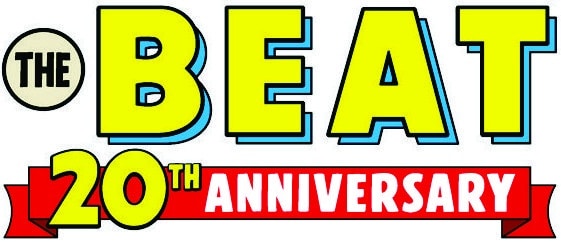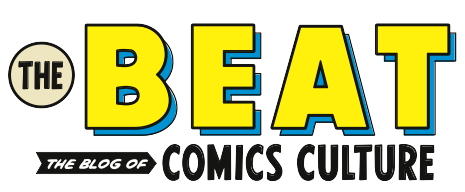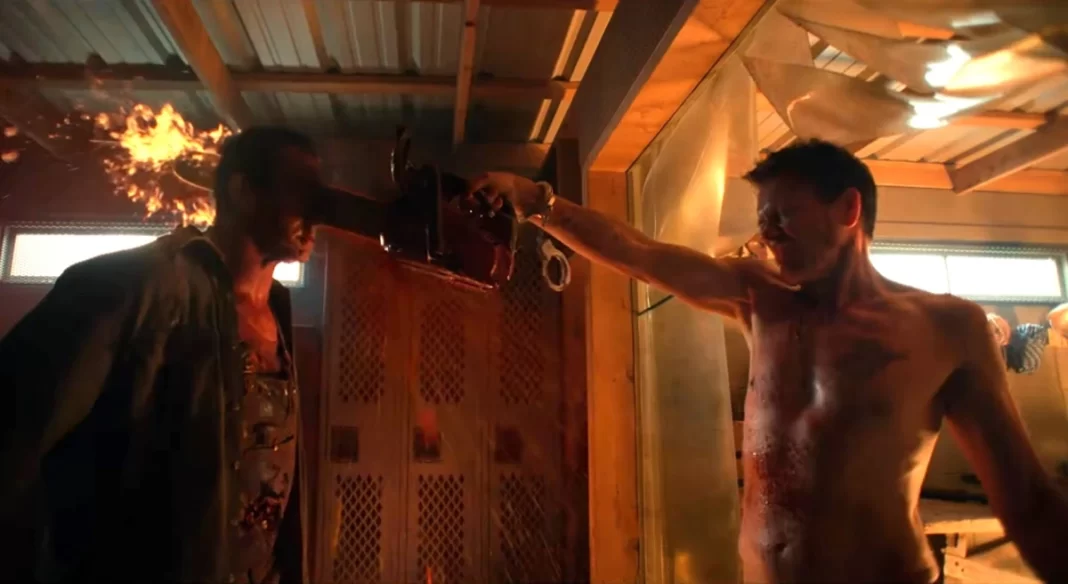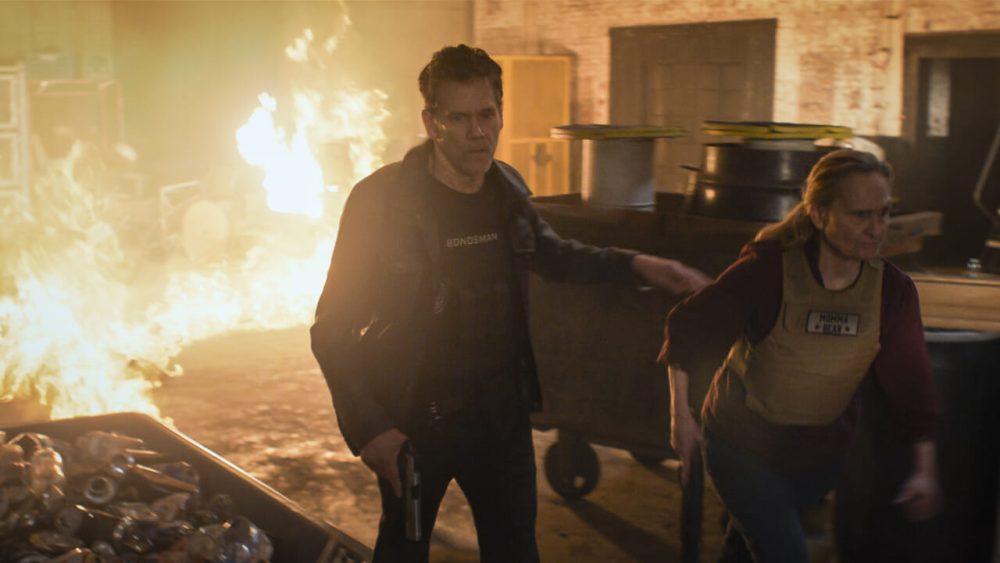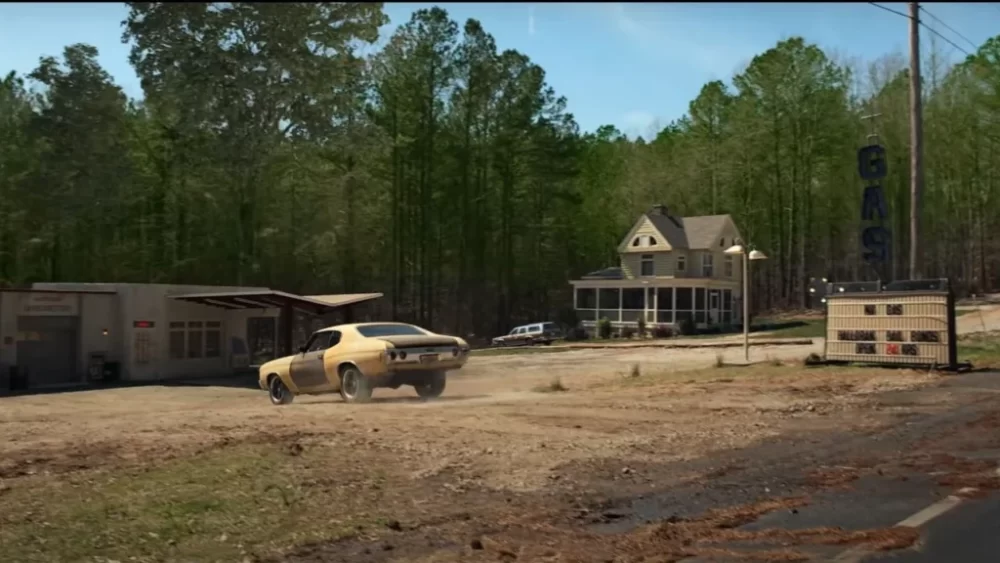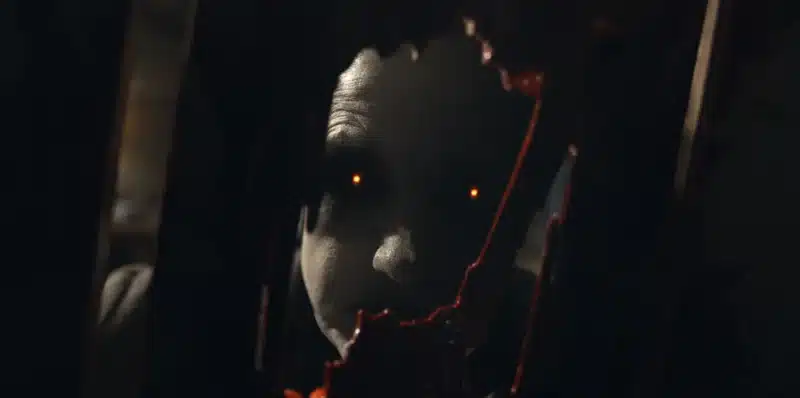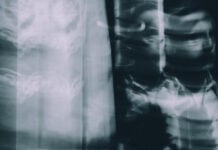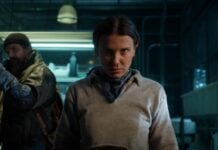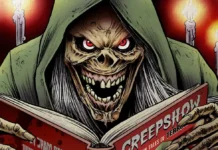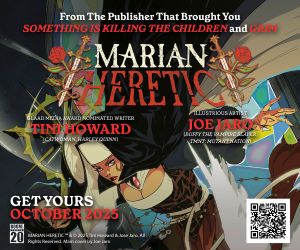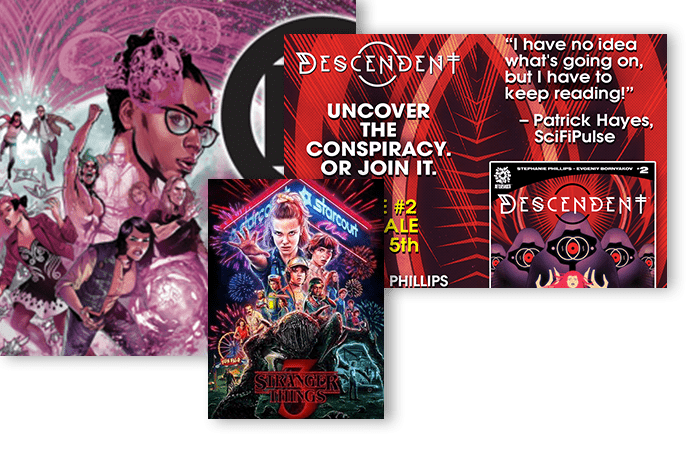The word “aesthetic” gets thrown around a lot, but do we really understand what goes into creating it? In the movie From Dusk Till Dawn, an isolated vampire bar near the border in Mexico is made to look like a raunchy Mayan temple decorated by someone with a keen eye for cheap strip club layouts. Solid red neon lights dominate the space, a color that’s reminiscent of freshly spilled blood. In short, it looks like a bar run by ancient vampires with a particularly vicious streak (an idea that ties to the myths and legends behind the Mayans’ ultraviolent public sacrifices). Production designer Cecilia Montiel was responsible for the bar’s aesthetic, aptly called The Titty Twister, and it was thanks to her and her team’s decision to combine Mesoamerican symbols with the visual cues associated with carnal debauchery that the movie emerged with an aesthetic all its own.
Production design was responsible for that, and it’s fair to say that this part of filmmaking isn’t nearly recognized as often as it should. It often seems like those who are interested in it are film buffs and scholars that live and die by their expertise on these matters. But that’s slowly changing, and important names are garnering more attention whenever their involvement is noted on upcoming projects. Eve McCarney is one of those names, especially in the realm of horror TV. Her talents have turned series like American Horror Stories and Into the Dark into distinct playgrounds of fear that simply elevate the storytelling on display in them.
McCarney’s latest work can be found in Amazon Prime’s The Bondsman, about a murdered bounty hunter (played by Kevin Bacon) that’s resurrected by the Devil to find demons that have escaped the confines of Hell. It’s set in the fictional town of Landry in southern Georgia, a place that taps into a ‘rough and ready’ Americana energy to paint a community that is both hospitable and hostile. Fans of Chris Carter’s 1996 TV series Millenium will feel at home here, despite the huge differences in tone and location.
McCarney has a ton of space to play around with here, complete with a varied color palette that allows large backwoods areas to indulge in their natural tones while letting remote shacks and decrepit buildings become wells of darkness that reveal other parts of the story. Rural locations are fertile ground for worldbuilding given their place in fiction, and McCarney takes full advantage of them. Shades of Sam Raimi’s The Evil Dead and True Detective can be found here, but McCarney finds ways to give everything extra attention so it doesn’t read like an homage piece.
The Beat sat down with McCarney to talk about craft, horror design, and why production designers deserve more attention.
RICARDO SERRANO: Putting together any kind of puzzle requires a kind of starting piece. Where do you like to start when putting together the look and feel for a new movie or series?
EVE McCARNEY: The very first thing I do is read the script. I mean, you have to start with the story and the characters and what the writer intends. So that’s kind of the starting point. When I start connecting with the material, I’ll start to see the sets and how it can all fit. From there, it’s research. I dive deep into looking for images that resonate with what’s in my head that I can later mix up with other ideas. The Bondsman has a bit of vintage in it, for instance, so I went into 60s architecture for one of its central locations: gas station.
I look for things that evoke a kind of tone and the mood, stuff I can then put together for something new. You can get a little bit of sexy with a little bit historical architecture and get something totally unexpected. Those things aren’t just lying around. You have to experiment a bit to get them. Also, I never want to do what someone else has done. I want to do something new and different. That’s why I jumped at the chance to work on Bondsman. It’s a genre mashup that lets me widen the scope of my research. It’s got romance and supernatural horror, and then it incorporates elements from procedural stories. It challenges me to come up with something different for it.
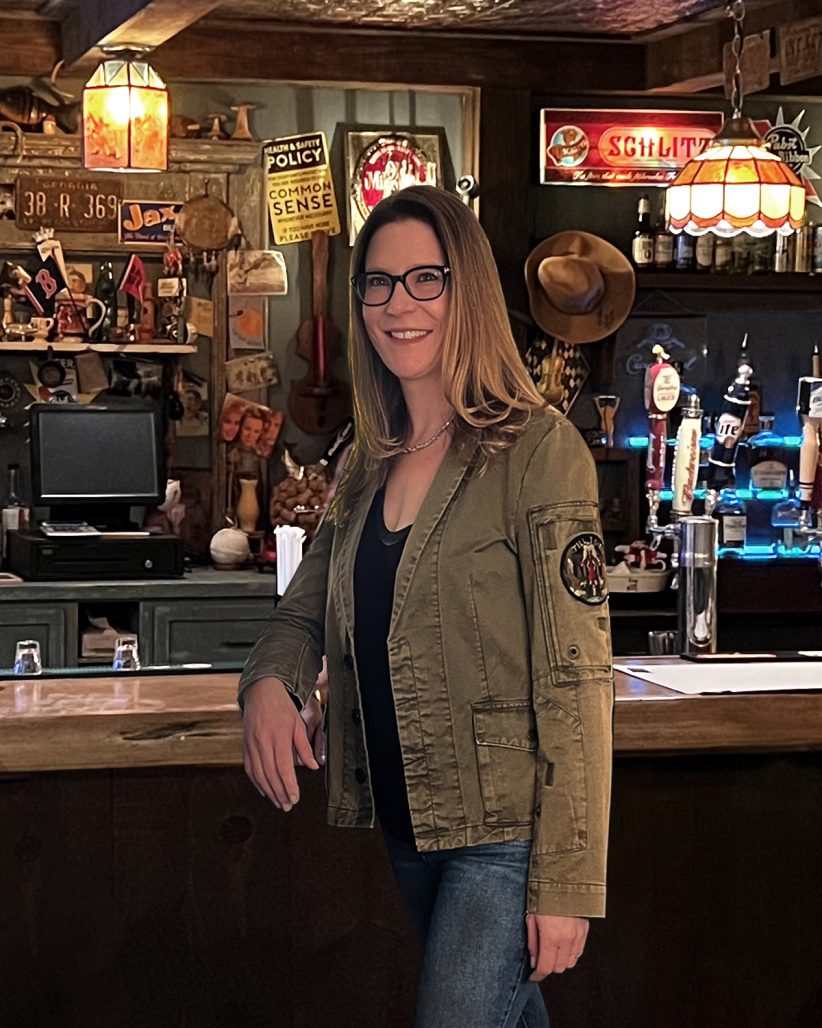
SERRANO: What made this process unique, or perhaps unexpectedly challenging, when it came to The Bondsman?
McCARNEY: There were a couple things. The first was a good bit of news, which was unexpected, and it was bringing me on early for research and development. It gave me a lot of time to really think through the set design and how actors were going to move through it. Typically, it’s an eight-to-ten week prep period, and it’s usually very condensed. You’re just trying to get something that’s cool but functional. You don’t usually have the time to be super thoughtful about it. With that extra time, though, I went through a lot of rounds of mood boards to get to the right tone, and then I started hand drawing the set designs.
After that, we brought in a set designer to actually draw the construction plan. In essence, I was doing more conceptual design, and it had been a really long time since I’d done that. It was a great kind of bonus to have that extra time to think about how I wanted the series to look and feel. I do think it paid off in what we were able to deliver.
Just look at the Halloran compound, which is the gas station and the house the main character operates out of. We had to build all of that. Before, it was an empty lot. I later had friends come up to me asking about how we found those buildings, not knowing we built them. They thought it was all real. That said, there were a few things we needed for it to work. For example, we needed a real road, because we didn’t really want to create one ourselves. It needed to be rural. It needed to have a certain look. We needed it to be big enough to have both the station and the house realistically positioned in relation to each other. Ultimately, we wanted the compound to look like a repurposed gas station that was converted into a bonds shop.
Then we came to the second tricky thing in the process, which was the weather. When we landed, it was 16 degrees and super cold. Then, as we started to build, it started to rain. We were dealing with flooding. Surprisingly, that ended up being a good thing because we ended up reinforcing everything to withstand the elements. There was some very real weather proofing that had to happen. That’s not a typical thing I deal with in LA, where it rains for a bit and then there’s no water in sight for a while. I really credit my construction crew for making it all work. They live and work in Georgia, so they knew what needed to happen to get things done.
SERRANO: How did you land in this realm of production design? Was it something you knew you wanted from the start?
McCARNEY: I have a little bit of a unique backstory. I was working in New York City as an art director at an advertising agency. I started to get a little unhappy with my day to day, and so I started wondering what else I could do. One night I was watching the Oscars, by then they were still going with Art Direction rather than Production Design, and when this category came up I thought to myself “what is that?” So, I started to research it.
I found I already did a lot of this stuff in my current job, and I’ve always been an artist. I was already in a heavily graphic space because of my art direction. I worked at a newspaper in New York, so I had a lot of graphics background. I thought it played right into my interests. I could already paint and draw, so all I really needed was to learn about the construction side of things.
I had minored in art history, so I had a lot of the right building blocks for it. Soon after, I signed up for a short film project I found on Craigslist. I had a $300 budget and three days to pull it off. The first day we were at a prison in Queens. I believe it’s where they shot some of The Departed. Six months later, I moved to LA and I took my shot. I worked a ton of low paying jobs for quite a few years, clawing my way into the indie world first and then into TV. If anyone had told me I would get to where I am now back in 2007, when I started on this, I don’t know that I would have believed that person.
SERRANO: You’ve worked on horror before, American Horror Stories being one of your most recent projects. What about the genre speaks to you or drives you to experiment within it?
McCARNEY: I’ve always been a huge horror nerd growing up, and my mom also likes horror. The love for horror is just there. And it’s for all kinds, from the campy stuff to the really good stuff. It wasn’t a conscious goal, though. It’s kind of the way it worked out. I’ve done a bunch of comedy stuff, drama, and even a period Western. So I didn’t go out seeking it specifically. But then you get to do something in horror, and once a little bit of it is under your belt you start attracting more jobs in that genre.
I was on a comedy show when I got American Horror Stories. The opportunity came up and I dove into it, especially because it’s a bit more high-concept horror. It gave me a lot of places to go creatively thanks to its genre play. Not everything was straight up horror. Some of it was thriller, some of it was mystery. It wasn’t all slashers or super gory or bloody. It was a world where rules could be bent. There are less limits in those scenarios, which meant I could go for very different ideas.
The Bondsman was more structured. You have to really be rooted in the culture of the place the story takes place in. We had a very firm point of view and starting point for the design, its perspective. We were very careful with our color palettes and our choices on how we were going to root the different parts of the worlds in our set work.
For example, one of the characters is an aspiring starlet, so I really wanted her dressing room to feel a little nice but also littered with boxes of booze because it’s also the storage room. That’s the type of place this is. She’s also doing the bills and the invoicing on a little desk in the corner, because it just so happens she’s also the manager. It’s all about mixing these things together to enhance the story, to add to the characters and their dreams and challenges.
SERRANO: Production design is, in many ways, the story’s central nervous system. It sets a lot of the tone that could later become signature of a movie or TV series. And yet, it’s criminally underrepresented in more mainstream discussions of storytelling. How do you see that perhaps changing? What needs to be brought closer to the spotlight?
McCARNEY: It’s gotten better since I started. Before, there was a real lack of awareness and caring. You know, it’s interesting because some of it is kind of nerdy, maybe a little techy. It caters to people that are really into processes, that want to really understand how things are made and want to geek out on it. A lot of other people just want to escape and watch stuff, so I think that type of person is probably never going to care. And I think that’s okay too, because there is escapism in this.
Personally, I just try to do interviews like this one, to talk about what I do to give people more of an awareness. A few weeks ago, I posted the five-step process behind the construction of The Bondsman’s compound. A lot of people think it’s just this one dude in LA who gets assigned projects here and there and he has to go at them alone. The post showed what goes into framing a built set, how we’re sheathing it and painting it, and what the results of that were. It’s all so fans understand what it is we do.
The response is almost always “oh I thought you only built some of it and then use a replica on stage for the interior, maybe boxcar other sets in.” I think people assume that we went and found this really cool place and shot there. I mean, early on in my career, that’s what we did. You’re going to a house and you’re shooting in it with minimal input. But on bigger shows, you’re building a huge part of the world. That’s the most exciting part. I love to share that knowledge through photos and sketches. I try to create a little buzz with my friend groups and on social media so that people that are interested in this line of work have an opportunity to hear about what really goes into it.
SERRANO: Bonus question, what movie or show would you recommend to aspiring production designers so they can appreciate what the job is all about?
McCARNEY: Guillermo del Toro’s Crimson Peak. It is simply stunning. It’s a Gothic enthusiast’s dream. They built a ton of the stuff that you see in the movie, too. I remember one part of the design included a room with a hole in the roof, and there was snow falling through it. It’s kind of like this element of the atmosphere coming inside the set which I just thought was so special. This is why I like doing genre work. There’s so much to play around with.
